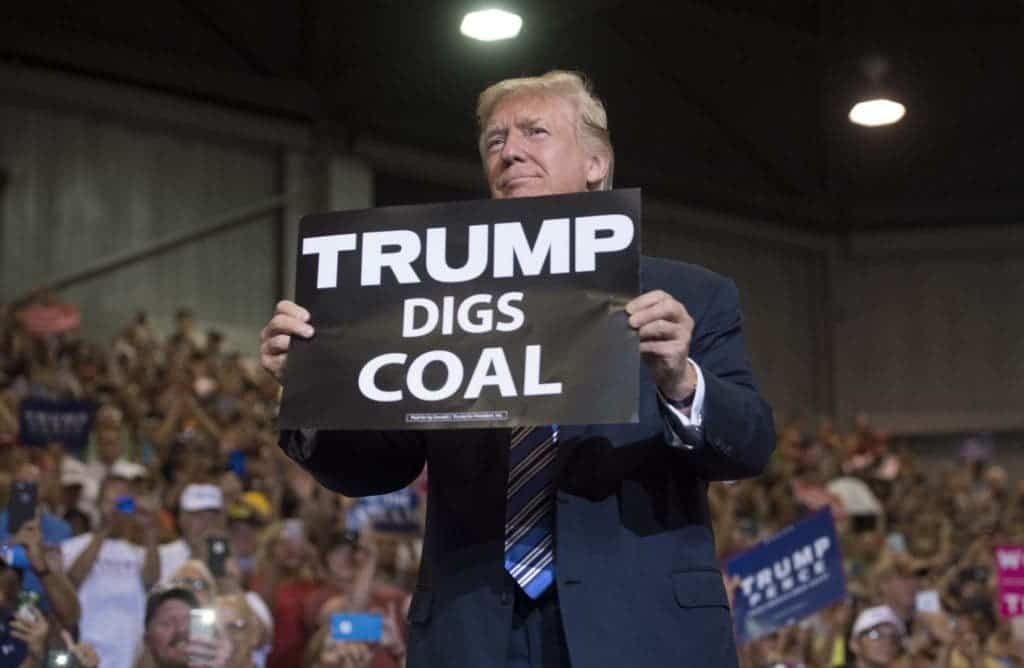President Donald Trump’s promised to boost the coal sector, but there is little economic sense to that: coal plants in the United States are shutting down and laying off workers as they can’t match the lower costs from natural gas and renewable energy.

The Navajo Generating Station and the Bruce Manfield power station are the latest in a long list of coal plants closing down this year. These two plants alone amount represent the entire emissions reductions from coal plants shut-downs in 2015 — a record year when 15GW of plants closed their doors in the US.
The two plants were important contributors to US greenhouse gas emissions. The Navajo station, located in Arizona, found no buyers after a two-year search, and was forced to shut down; the plant released 20 million metric tons of carbon dioxide, which represents more than three million cars. Meanwhile, the Bruce Manfield station was the largest one in Pennsylvania and had operated for 40 years.
“You notice the average size of retired plants going up over time. There are not a lot of small plants left, period,” said John Larsen, who leads power-sector analysis at the Rhodium Group. “Once you’ve cleared out all the old inefficient stuff, it’s logical the next wave would be bigger and have more implications for the climate.”
The coal industry in the US has been affected by a lower electricity demand, a preference by customers for low-carbon energy and more competition from other sources of energy such solar and wind. The use of coal has been declining since 2000, according to the US Energy Information Administration (EIA).
Power companies will finish this year having retired or converted to gas over 10.6 MW of coal plants, according to EIA. Coal will only provide 25% of the US energy mix by the end of the year, while natural gas is on the rise and will represent 40% of the energy mix, expected to keep on growing.
Trump has placed a lot of effort to avoid this trend. He replaced the Clean Power Plan with the new Affordable Clean Energy Rule, which gives states more flexibility to keep coal plants open. But this hasn’t changed things much, as economics is favoring other sources of energy.
The cost of coal power is between $60 and $143 per megawatt-hour, according to an analysis by the financial advisory firm Lazard. Meanwhile, natural gas is much cheaper thanks to new technologies, now at $41 to $74 per megawatt-hour. Wind is the cheapest, at $29 to $56.
Among all states, Wyoming has been the most affected one as the country’s main coal producer. Demand is under decline and two coal mining companies, Cloud Peak and Blackjewel, have already filed for bankruptcy protection, each one laying off over 600 workers.
The climate factor
In the past decade, coal has been the energy to grow the most across the globe. Between 2001 and 2010, coal consumption rose 45%. This has also meant the highest increase in anthropogenic greenhouse gas emissions in human history.
Global warming is among coal’s most significant impacts. Chemically speaking, coal is formed mainly by carbon. When burned, it reacts with oxygen and produced carbon dioxide. CO2 represents 76% of the global human-caused emissions.
Despite its now lower role in the US, coal is still the most significant source for electricity in the plant. Most of the coal electricity generation today happens in Asia, where several plants have opened up in the last decade.
The temperature on the planet has increased about one Celsius degree since the pre-industrial era. Coal is responsible for 0.3 Celsius degrees of that increase, according to the International Energy Agency (EIA).









